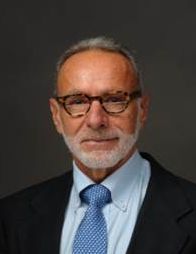THE POTENTIAL ROLE OF YOGA AND MEDITATION IN PEDIATRIC PRACTICE
Over the past several years, there has been increased attention to issues of physician burnout and a need from physicians to provide non-pharmacologic tools to help patients deal with emotional and physical issues. New York Chapter 2 of the American Academy of Pediatrics is dedicated to both these principles and supports a group of pediatricians who actively promote Yoga and Meditative Practice. Dr. Ron Marino has lectured at national meetings about the importance of Yoga as a tool for both pediatric practice and physician health. He shares his knowledge with “INSIGHTS INTO CHILD HEALTH.”
Question: Why should your AAP Chapter publish an article about yoga?
Answer: Because pediatricians are concerned with enhancing health and well-being and the practice of yoga is a route to this and for both patients and practitioners. When most people hear the word yoga they think of individuals in unobtainable postures which require superhuman strength and flexibility. This is NOT yoga! This is one component of yoga practice.
An individual’s yoga practice may focus more on the subtle meditative aspects, the philosophical aspects, or the physical aspects. This diversity of approaches and practice makes studying the health benefits in a traditional Western scientific way very challenging. However there are many studies concerning mindfulness meditation and a growing body of literature about yoga as well.
Question: What are some of the medical benefits of practicing yoga that have been studied?
Answer: More studies are being published which look at both the clinical and physiologic implications of yoga and other meditative practices. How yoga works is still being explored, but evidence is mounting that yoga practice:
- Upregulates parasympathetic tone
- Decreases inflammatory mediators
- Increases immunoglobulin production
- Enhances telomere strength
Neuro-anatomically, MRI studies suggest yoga increases pre-frontal cortex and posterior cingulate activity and is associated with a decrease in size of the amygdala.
Question: What about clinical applications in clinical practice?
Each day, general pediatricians are being asked to provide more mental health care. While our continuing medical education has rightly focused on learning how to manage common medicines used for these conditions. I think Yoga and Meditative Practice can have a role. Studies regarding the clinical application of yoga for patients have been useful for:
- Anxiety, Aggression and Pain
- Substance abuse
- Asthma and Irritable Bowel Syndrome
- Depression
- Insomnia
Question: Can Yoga help physicians dealing with issues of burnout?
Yes. As physicians we are experiencing changing dynamics within the profession. Daily we experience stress from a loss of autonomy, income and even societal respect. These factors contribute to an increased burnout and feelings of depression by healthcare providers. While there are many ways to modify burnout and support physician well-being, consistent yoga practice may help. Physicians might consider yoga for themselves to take advantage of the health benefits. But like any other activity yoga must be practiced consistently and mindfully.
Question: Yoga can seem intimidating, what advice do you have for someone interested, but wary?
Finding a teacher is a good place to start. Given the remarkable diversity of offerings one may need to explore several yoga Studios and/or teachers prior to settling into a practice that’s a good fit for you. The Yoga Alliance is a certifying body that credentials teachers. However as with many therapeutic arts, the credential may or may not yield the best experience for you. As with therapists or personal trainers, word of mouth is also a great way to connect to a teacher.
Yoga, like medicine, is a lifetime practice. Mindful consistent activity may yield physical and mental benefits and, in my opinion, the risk, when practiced mindfully, are worth the benefit.
(Dr. Ron Marino, DO, MPH, FAAP is a pediatrician and Associate Chairman and Director of General Pediatrics at Winthrop-University Hospital. He is co-chairman of the Yoga and Meditation Committee of the New York State (District II), Chapter 2 (Long Island) of the American Academy of Pediatrics.)

